|
|
![]()
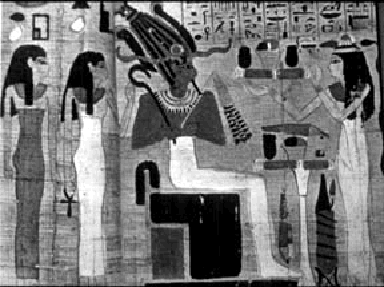
Osiris.
A depiction of the Egyptian god Osiris, Lord of the Dead. On papyrus, from the
Egyptian "Book of the Dead."
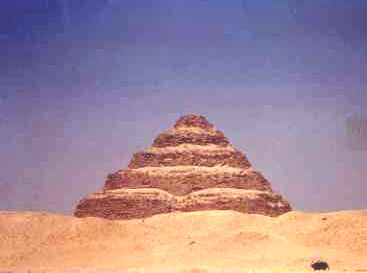
View
of Stepped Pyramid of Vizier Imhotep.
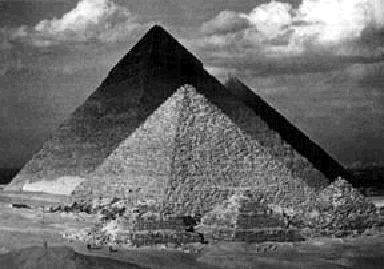
Pyramids of Khufu (Cheops) at
Giza, Old Kingdom Egypt, 2700-2200 BC. The Great
Pyramid of Khufu at Giza stood 230m at the base and 147m tall. Until the
construction of the Eiffel Tower in 1888 it was the
tallest man-made structure on the planet. By this point Egyptian
architects had determined how to dress fine limestone blocks to form an outer
casing to the monument, thus furnishing it with its distinctive, sloping,
smooth sided facades. These in turn were aligned
almost precisely according to the true points of the compass. From a
technological standpoint alone the construction of
this monument represents an unparalleled achievement. To construct the pyramid
its designers employed some 2.3 million stone blocks weighing an average of 2.5
tons. The hierarchy employed corvée labor teams to
quarry stone throughout the valley of the Nile: limestone blocks were extracted from cliffs along the east bank of the river;
granite blocks were conveyed during the flood season from Aswan some 1100 km to
the south. To raise the blocks into place laborers employed sturdy wooden sleds,
which they hauled up earthen ramps built against the emerging structure. Modern
architectural historians calculate that the building project would have
required some 20,000 laborers twenty years to complete.
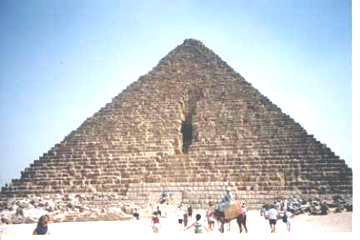
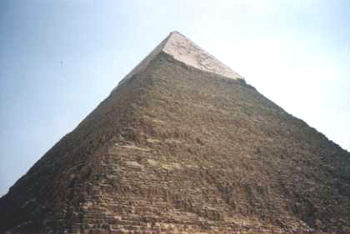
More
views of same. Notice remains of limestone capping of Great Pyramid at right.
[The link bar feature is not available in this web]